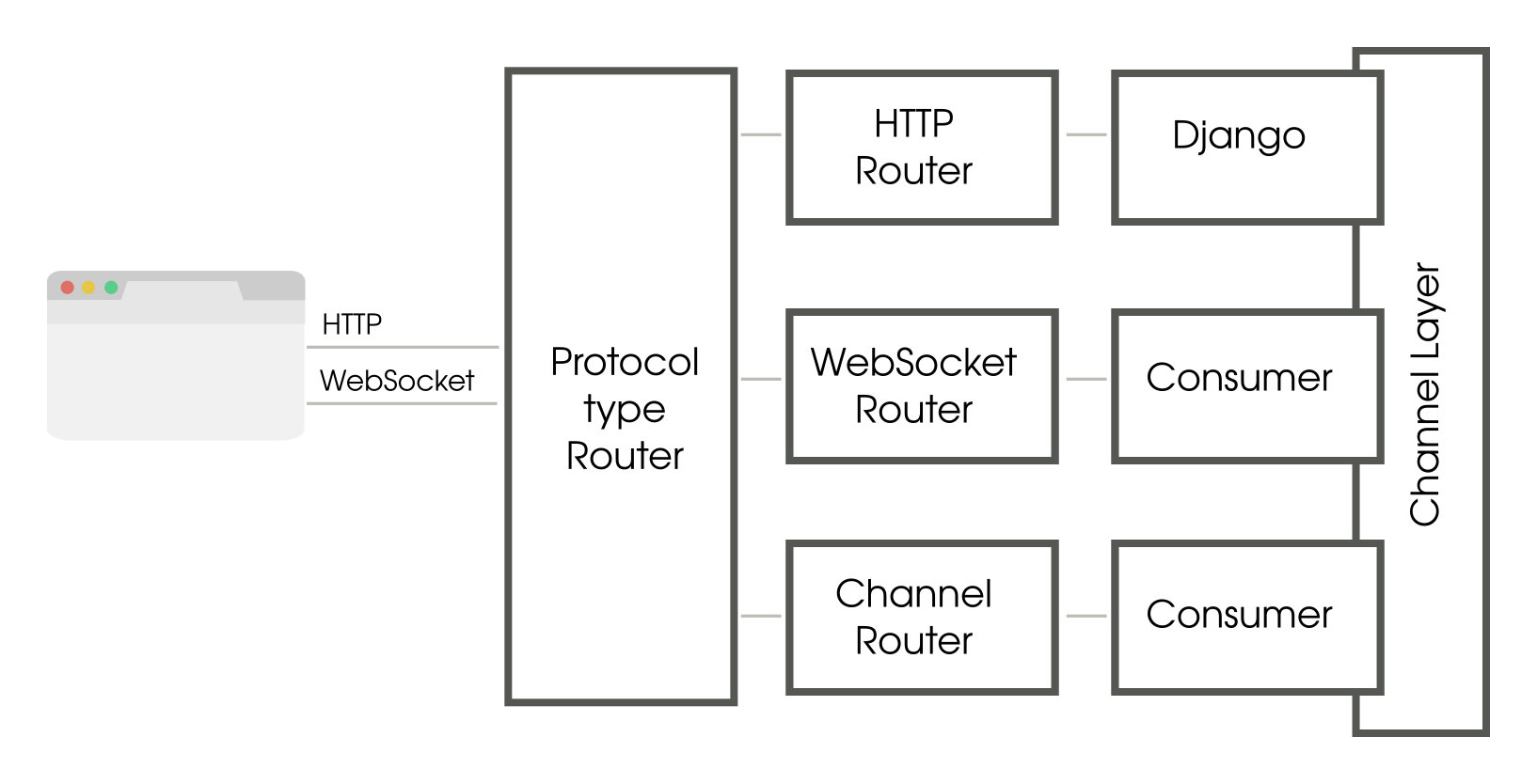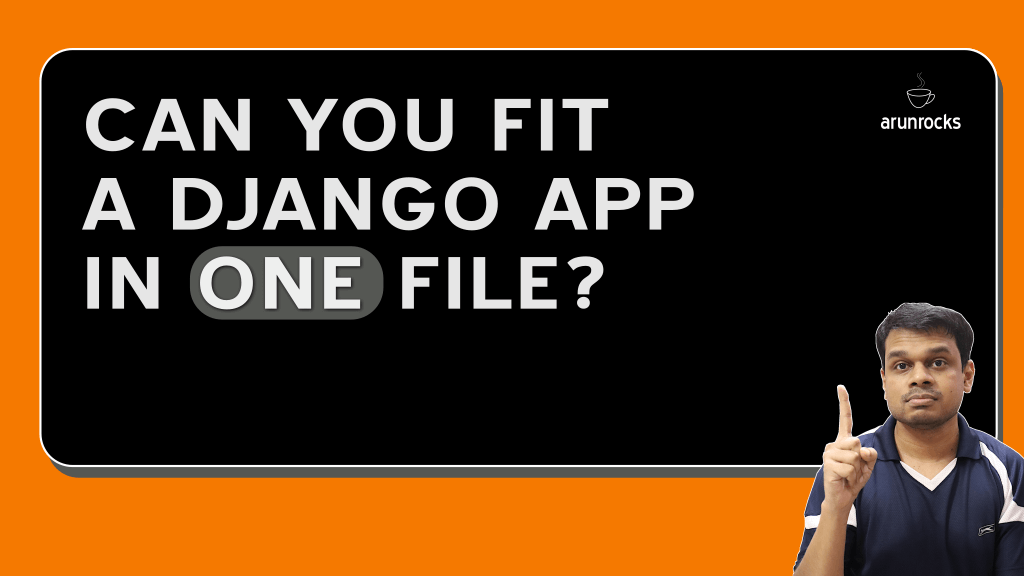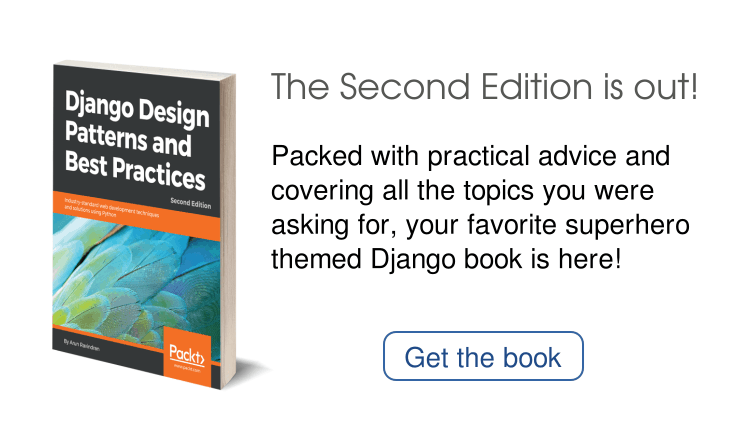Django Channels
Django Channels was originally created to solve the problem of handling asynchronous communication protocols like say WebSockets. More and more web applications were providing realtime capabilities like chat and push notifications. Various workarounds were created to make Django support such requirements like running separate socket servers or proxy servers.
Channels is an official Django project not just for handling WebSockets and other forms of bi-directional communication but also for running background tasks asynchronously. As of writing, Django Channels 2 is out which is a complete rewrite based on Python 3’s async/await based coroutines.
This article covers the concepts of Django Channels and leads you to a video tutorial implementing a notifications application in Django.
Here is a simplified block diagram of a typical Channels setup:

How a typical Django Channels infrastructure works
A client such as a web browser sends both HTTP/HTTPS and WebSocket traffic to an ASGI server like Daphene. Like WSGI, the ASGI (Asynchronous Server Gateway Interface) specification is a common way for applications servers and applications to interact with each other asynchronously.
Like a typical Django application, HTTP traffic is handled synchronously i.e. when the browser sends a request, it waits until it is routed to Django and a response is sent back. However, it gets a lot more interesting when WebSocket traffic happens because it can be triggered from either direction.
Once a WebSocket connection is established, a browser can send or receive messages. A sent message reaches the Protocol type router that determines the next routing handler based on its transport protocol. Hence you can define a router for HTTP and another for WebSocket messages.
These routers are very similar to Django’s URL mappers but map the incoming messages to a consumer (rather than a view). A consumer is like an event handler that reacts to events. It can also send messages back to the browser, thereby containing the logic for a fully bi-directional communication.
A consumer is a class whose methods you may choose to write either as normal Python functions (synchronous) or as awaitables (asynchronous). Asynchronous code should not mix with synchronous code. So there are conversion functions to convert from async to sync and back. Remember that the Django parts are synchronous. A consumer in fact a valid ASGI application.
So far, we have not used the channel layer. Ironically, you can write Channel applications without using Channels! But they are not particularly useful as there is no easy communication path between application instances, other than polling a database. Channels provides exactly that, a fast point-to-point and broadcast messaging between application instances.
A channel is like a pipe. A sender sends a message to this pipe from one end and it reaches a listener at the other end. A group defines a group of channels who are all listening to a topic. Every consumer listens to own auto-generated channel accessed by its self.channel_name attribute.
In addition to transports, you can trigger a consumer listening to a channel by sending a message, thereby starting a background task. This works as a very quick and simple background worker system.
Building a Channels Application Step-by-step
The following screencast covers the creation of a notification application using Django Channels. You can access the code on Github. The intermediate projects like the Echo Consumer can be accessed as branches of the git repository.
The show notes can be accessed on Github.
Check out the video tutorial and let me know if you found it useful! To know more, read the Django Channels documentation.
This article contains an excerpt from "Django Design Patterns and Best Practices" by Arun Ravindran




